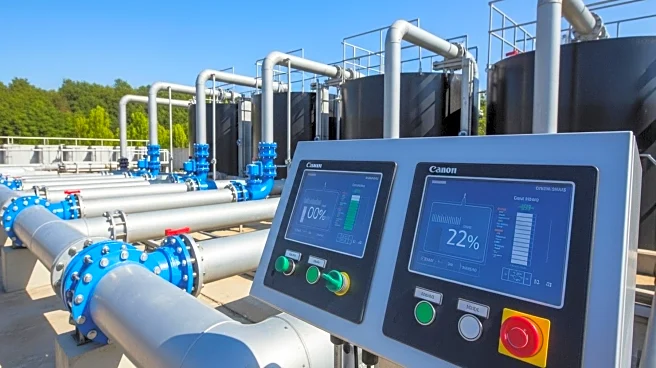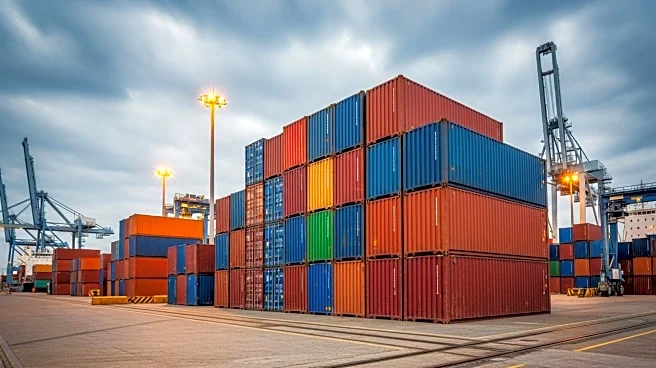What's Happening?
The Panama Canal Authority is undertaking significant infrastructure projects to address the challenges posed by severe droughts that have affected the canal's operations in recent years. The canal, which relies heavily on fresh water, experienced a drastic reduction in vessel transits due to drought conditions from late 2022 to 2024. This led to the implementation of vessel weight restrictions to conserve water. The U.S., as the largest user of the Panama Canal, is significantly impacted by these disruptions, with 73% of Panama Canal traffic consisting of U.S. commodity exports and imports. To mitigate future risks, the Canal Authority is planning to construct a land bridge, including a natural gas pipeline, to facilitate the transport of liquified petroleum gas and other products without relying on the canal itself. This initiative aims to attract more LNG transits and improve reliability in product delivery.
Why It's Important?
The Panama Canal is a critical component of U.S. trade infrastructure, handling approximately $270 billion in cargo annually. The recent drought-induced disruptions highlight the vulnerability of global trade routes to climate change. By investing in alternative infrastructure, the Panama Canal Authority seeks to ensure the continuity of trade flows, particularly for high-value energy products destined for Asia. This move is crucial for U.S. energy companies, which are eager to explore reliable and efficient transport options. The development of a land bridge and pipeline could enhance the competitiveness of U.S. exports, reduce transit times, and provide a more dependable route for energy commodities, thereby strengthening the U.S. position in global trade.
What's Next?
The Panama Canal Authority has initiated the pre-qualification and selection process for concessionaires to build the proposed infrastructure. This includes a road connecting the Atlantic and Pacific coasts and port terminals capable of handling various cargo types. The pipeline project, announced in Tokyo, is expected to attract interest from U.S. energy companies looking to capitalize on the new transport route. As the canal returns to regular operating conditions, stakeholders will closely monitor the impact of these developments on trade dynamics and the potential shift in LNG traffic patterns.
Beyond the Headlines
The infrastructure projects at the Panama Canal reflect broader trends in adapting to climate change impacts on global trade routes. The initiative underscores the importance of diversifying transport options to enhance resilience against environmental disruptions. Additionally, the focus on energy products highlights the strategic importance of reliable supply chains in maintaining economic stability and meeting international demand. These efforts may set a precedent for other trade gateways facing similar challenges, prompting a reevaluation of infrastructure investments in response to climate variability.













